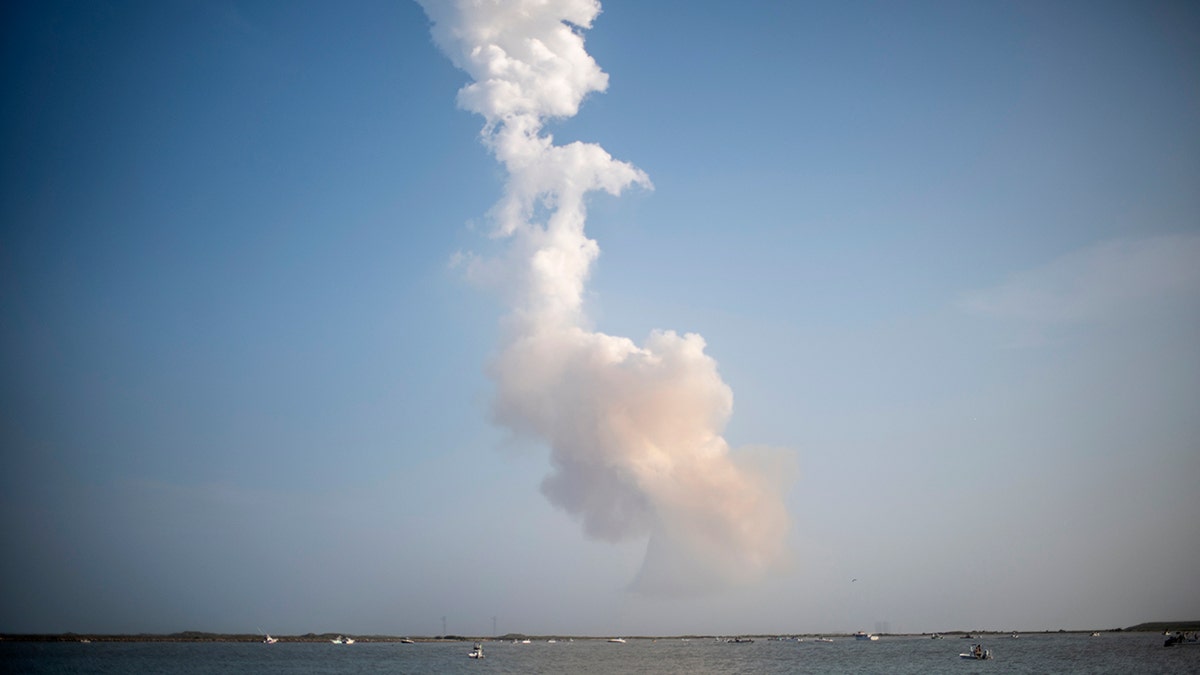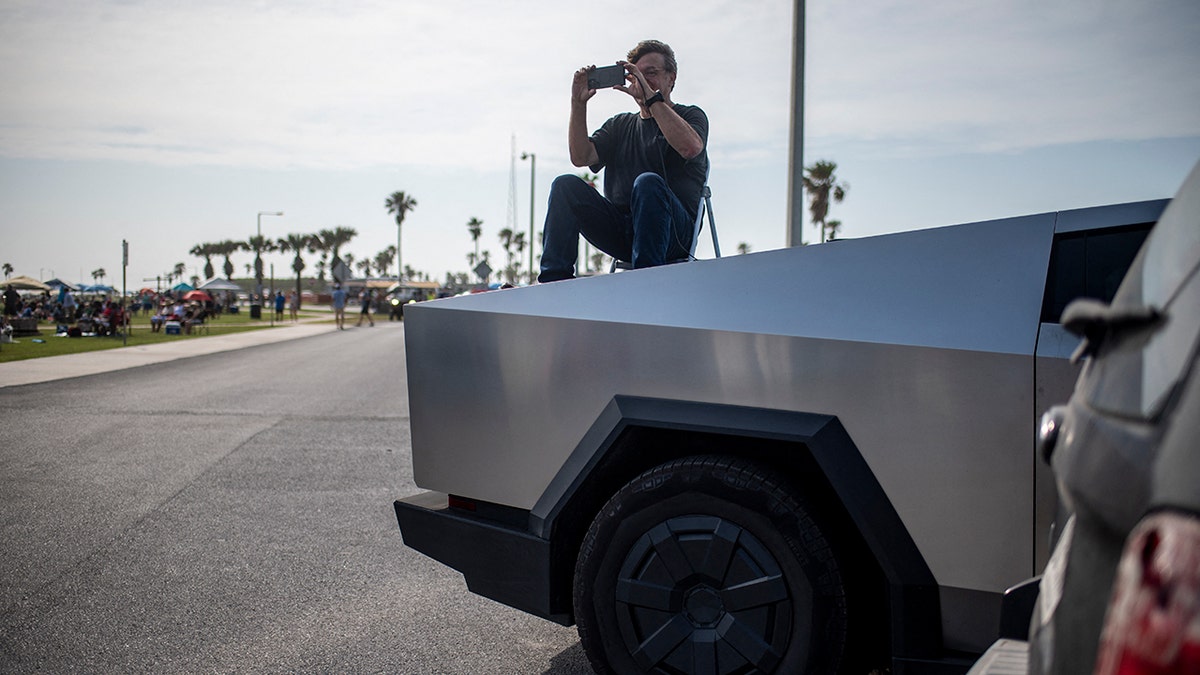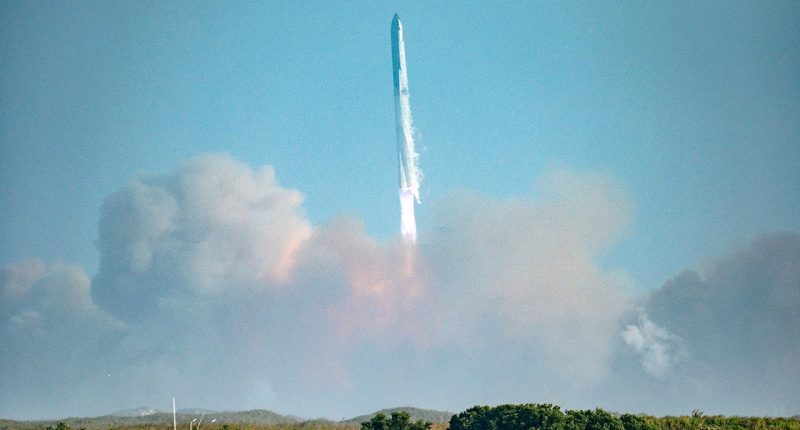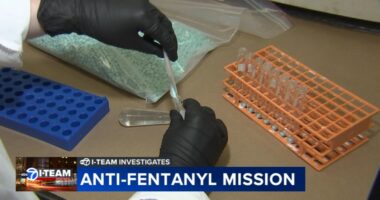Share this @internewscast.com
The ninth test flight of SpaceX’s Starship spacecraft, taking off on May 27 from the company’s Starbase facility in Texas, concluded in failure shortly after departure.
The mission aimed to deploy eight Starlink simulator satellites and test the vehicle’s reentry system with 100 removed heat-shield tiles.
The spacecraft experienced a successful launch and initial climb but later began spinning uncontrollably because of a leak in the fuel system, preventing the heat-shield test from being conducted.
SpaceX CEO Elon Musk shared on X after the test flight, stating, “Starship reached the scheduled ship engine cutoff, marking a significant improvement over the previous flight! Additionally, there was no major loss of heat shield tiles during the ascent.”

A plume of exhaust from the rocket boosters is left behind after the SpaceX Starship rocket launched from Starbase, Texas, as seen from South Padre Island on May 27, 2025. SpaceX mission control lost contact with the upper stage of Starship as it leaked fuel, spun out of control, and made an uncontrolled reentry after flying halfway around the world, likely disintegrating over the Indian Ocean, officials said. (SERGIO FLORES/AFP via Getty Images)
The Federal Aviation Administration (FAA) has been notified of the incident and is expected to conduct an investigation to determine the cause of the failure and assess any potential impact on future launches.
“The FAA is aware an anomaly occurred during the SpaceX Starship Flight 9 mission that launched on Tuesday, May 27, from Starbase, Texas, and is actively working with SpaceX on the event. There are no reports of public injury or damage to public property at this time,” the FAA wrote in a statement.
SpaceX has not yet announced a timeline for its next test flight but has indicated that the company will continue to refine the Starship system based on the data collected from this mission.

Fritz Kocher sits in the back of his Tesla Cybertruck while waiting on South Padre Island to watch the SpaceX Starship rocket launch from Starbase, Texas, on May 27, 2025. SpaceX mission control lost contact with the upper stage of Starship as it leaked fuel, spun out of control, and made an uncontrolled reentry after flying halfway around the world, likely disintegrating over the Indian Ocean, officials said. (Photo by SERGIO FLORES/AFP via Getty Images)
“Developmental testing by definition is unpredictable,” SpaceX stated on their website. “But by putting hardware in a flight environment as frequently as possible, we’re able to quickly learn and execute design changes as we seek to bring Starship online as a fully and rapidly reusable vehicle.”
SpaceX did not immediately respond to Fox News Digital’s request for comment.
















